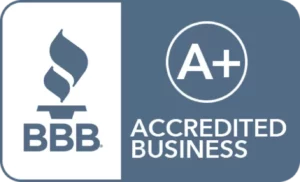There’s a major difference between a Custodian Control IRA and one with Checkbook Control. Though many financial institutions offer Self Directed IRA plans, most are custodian controlled. Basically, this means you need your custodian’s permission to make any investment. To be truly self-directed, you must have total control of your investment decisions. You achieve this by creating a limited liability corporation or LLC. Your IRA would own the LLC, and you, as the holder of the IRA, are in total control of your choices. This is also known as Checkbook Control.
Generally, Self Directed IRAs can be classified into three categories: Financial Institution Self-Directed IRA, Custodian Control IRA without Checkbook Control and the Checkbook Control Self-Directed IRA. Here, we’ll talk about each one.
Financial Institution Self-Directed IRA
When you open up a Self-Directed IRA at one of the major financial institutions, such as Fidelity or Vanguard, you are really limiting yourself. Instead of having the freedom to choose your investments, you are stuck with the ones they offer. For the most part, you have to invest in traditional assets classes, like stocks, bonds and mutual funds. They make their money by steering you to their products. You will not have the ability to invest in alternative investments, like real estate and precious metals.
Therefore, if you’re looking to broaden your investments, a financial institution Self-Directed IRA is not for you. On the other hand, if you just want to invest in the standard type of investments, you should be okay. Fees should be on the low side, but you get what you pay for!
Related: Prohibited Transactions in a Self-Directed IRA
Custodian Control IRA without Checkbook Control
A custodian control IRA generally allows for alternative investments. In that regard, you are not limited in what types of investments you can make. Though, they may still limit your investment choices. Popular investments, such as real estate and tax liens, will usually be allowed. However, more “exotic” choices, such as cryptocurrencies and race horses, may not.
The biggest issue is the need for custodial consent. For example, you find a property you wish to invest in. You must first present it to your custodian before you can take any action on it. You will need to provide documents for a transaction review process. Not only will you be charged for these services, delays may result in the loss of the investment. Fees will also add up. These may include account value fees, transaction fees and approval letters.
Lastly, there’s no guarantee that the investment will be approved. Your custodian may deem the investment too risky. Now you’re back to square one. Even if you’ve done your due diligence and know the investment is right for you, you cannot use your Custodian Control IRA to invest. Even if you do get approved (finally), someone else may have already swooped in while you were waiting.
Self-Directed IRA with Checkbook Control
Only with Checkbook Control can you have total control of your Self-Directed IRA funds. You never need to ask for permission to make an investment that you think is in your best interest. No longer will you miss out on an opportunity waiting for consent. Once you find the right investment, you can use your checkbook (or debit card or wire transfer) to snatch it up. Further, you are not bound to the limited schedule of a custodian. You have access to your IRA 24/7/365.
Setting up a Checkbook Control Self-Directed IRA is quite easy. As mentioned, you first create an LLC that the IRA will own. Since you are the owner of the IRA (and the LLC), you may choose to invest the funds as you see fit. A bank account will be created and funded with your IRA funds. This is the pure definition of checkbook control.
This structure has been around for decades, but not many people know about it. In fact, in 1996 the Swanson v. Commissioner court case affirmed this. In it, the Tax Court “ruled that the capitalization of a new entity by an IRA for making IRA related investments was a permitted transaction and not prohibited pursuant to Code Section 4975.”
Comparison Chart
| Financial Institution Self-Directed IRA | Custodian Controlled Self-Directed IRA Without “Checkbook Control” | Self-Directed IRA LLC with “Checkbook Control” | |
| Traditional investments options (stocks, mutual funds, etc.) | Yes | Yes | Yes |
| Nontraditional Investment options (i.e. real estate, precious metals, tax liens, etc) | No | Yes | Yes |
| Unlimited Investment Options | No | No | Yes |
| All Investments must be approved by the custodian | N/A | Yes | No |
| True “checkbook control” | No | No | Yes |
| Direct Access to your Retirement Funds | No | No | Yes |
| Limited Liability | No | No | Yes |
| High annual account fees | No | Yes | No |
| Transaction fees | No | Yes | No |
| Bankruptcy Protection of up to $1 million | Yes | Yes | Yes |
Conclusion
Using a Custodian Control IRA may be right for some people. However, for those that want the freedom to use their IRA funds when and how they want, it just doesn’t cut it. Only when you have checkbook control can you have a truly Self-Directed IRA. Don’t miss out on an investment waiting for your custodian to comeback to you at their convenience.
If you’d like to talk about all the advantages of the Checkbook IRA, please contact us @ 800.472.1043. Thanks for reading and be sure to browse all of our blog posts!











